There are quite a few islands in the Thames, once you get out beyond Hammersmith to the west. Most of them aren’t used for much other than boat clubs, but Platt’s Eyott is a an exception.
There’s an industrial area with workshops and recording studios, boats moored around the perimeter. The infrastructure is there because the island was used for making torpedo boats during both world wars, and it’s now settled down into a few concrete buildings and some scrubland – perfect for light industry.
I’ve been to lots of these kinds of workshops over the years, and I love how varied the locations are. Even when you’re producing luxury products, cost and space are paramount – the exterior might be dust and cows in Amrtisar, blackened houses in Peebles, or shiny numbered lots in Naples, but it’s rarely glamorous.
EB Meyrowitz has been on Platt’s Eyott (the second word related to ‘islet’, as in small island) for about four years. You reach it across an iron footbridge – only accessible to pedestrians or a very narrow van, one of which passed us as we crossed, a wet dog looking through the window and long rolls of material sticking out the back.
Meyrowitz make their eyewear, mostly in acetate and horn, on the first floor of the central building.
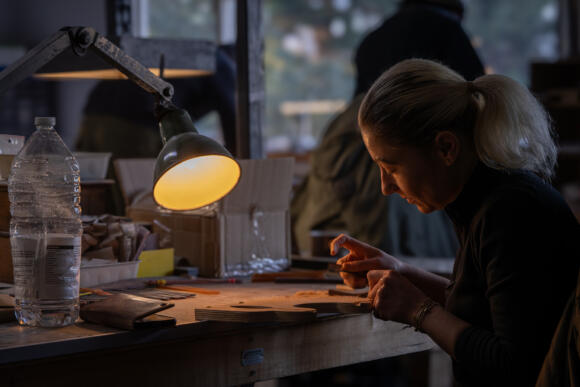
When I first got to know EB Meyrowitz, around 13 years ago, their glasses were made through a series of outworkers – in much the same way as most bespoke shoes are made in the UK.
Over time the downsides of that system became too much – particularly the lack of control – and they moved everything in-house. The workshop was initially in north London and is now here, in the south-west, with 4-5 workers on average including one intern.
The way Meyrowitz offers glasses to customers has evolved too. There has always been a lot of emphasis on customisation, but they don’t necessarily do what readers would think of as ‘bespoke’ – and yet don’t do that much ready-to-wear either.
The majority of what Meyrowitz does is customised versions of the ready-made frames you see in the store (Royal Arcade, Mayfair). I actually think that with glasses this makes a lot of sense.
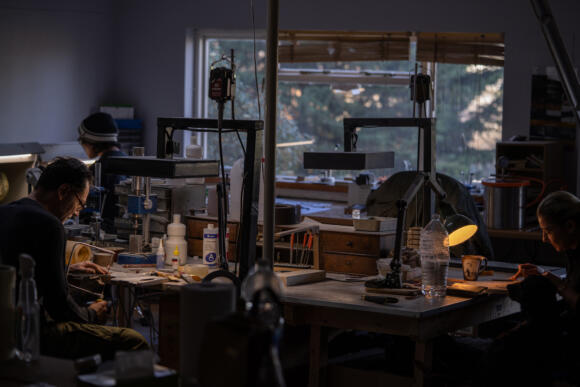
A gentleman came in recently, apparently, wanting to make bespoke glasses. He was rather disappointed when he found out that the frames would not be designed from scratch, and would therefore not produce a frame that could not be found anywhere else, on anyone else.
“The problem with doing that is that customers can’t imagine what the final product will look like, and particularly look like on them,” says Sheel from Meyrowitz. “Often they have an idea in their head – perhaps some version of Aristotle Onassis – but they’re not going to look like him, because they just have a different face. People just suit different things.”
This has been my experience too. I’ve had bespoke glasses made by several makers, and the gap between imagination and realisation often leads to disappointment. I’d say it’s my experience across a lot of bespoke, but particularly with glasses, where the margins for error are smaller and so are the number of shapes that suit you.
Readers sometimes comment that PS is useful because it saves them from making mistakes by making them first. Bespoke commissions like this are one area where I think that’s particularly true. If I can save readers going through the same experience as me, it will save them a lot of time and money.
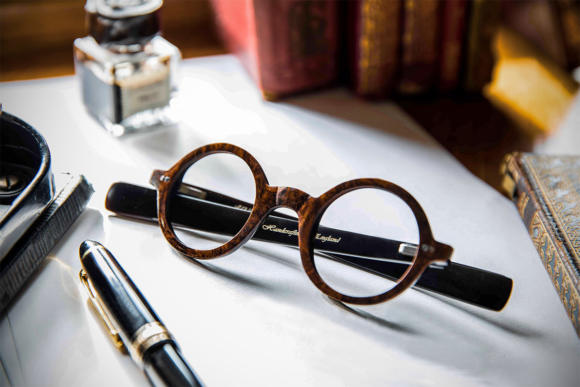
Most of the time Meyrowitz work with one of the frames in the store and then adapt it. These changes can be quite extensive, including changing the shape around the nose to fit it more snugly, for example. It’s not just shaving away or bending an arm – it is making something new.
Sometimes the changes can be minor as well. Generally the only changes I’ve needed are a new arm on one side as one side of my head never fits the same as the other.
Meyrowitz have emphasised this customisation more as the years have gone on. They do sell RTW sunglasses (where the range of suitable designs is much larger, and timing often more of an issue) but for opticals they try to always have this kind of extended customisation (if the parallel is tailoring, then this is something like made to measure).
They’re also thinking about introducing a real bespoke service in the way that the customer wanted – from scratch – but it would be more involved. Trial pairs, designs superimposed on photographs, multiple meetings and so on. And obviously more expensive.
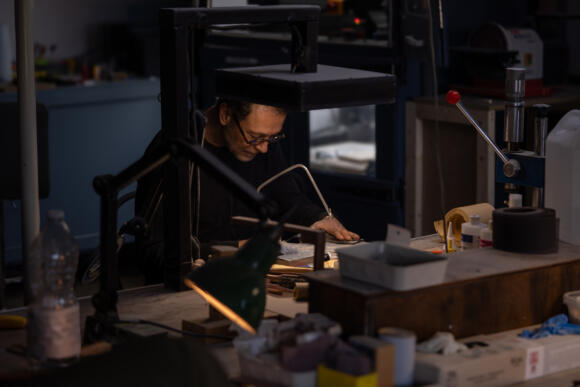
Back on the island, I’m watching one of the craftspeople drip wax from a candle onto buffalo horn.
Horn is a lovely material, attractive because it’s natural and warms to the skin as only a natural material can, and we can’t really get tortoiseshell any more. But it’s a bugger to look after – it must be stored at a particular humidity, moisturised throughout its life, and usually brought back to the maker every couple of years. Otherwise it will eventually dry out and twist out of shape.
It’s also not easy to produce the range of colours that people want. The mottled pattern of tortoiseshell has become so synonymous with glasses that most people don’t make the connection to actual tortoises anymore, but it is something they like. So if they want it on horn, the material has to be hand dyed with the pattern, and wax is used to stop the dye from going onto certain areas.
Drip, drip, drip goes the candle. It makes the workshop smell wonderful, and it’s impressive the craftsperson can create that regular-but-still-natural-looking pattern as we all stand and watch.
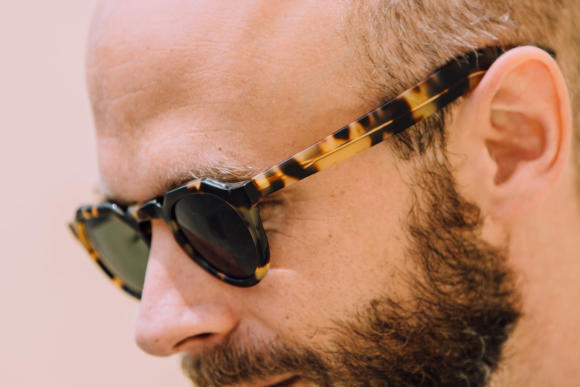
I think glasses, particularly sunglasses, are becoming more of a menswear accessory. With the frequent absence of ties and handkerchieves these days, men that think about these things are turning to other accessories like belts, bags – and something else to stuff in their breast pocket.
A reader admitted to me recently that he really only needed his glasses for driving, but he carried them all the time because they helped fill that yawning void he felt in his outbreast pocket.
Perhaps there will be an increase in glasses with interesting arms, so one can be displayed attractively when it hooks over that pocket. Not bright colours or animal faces, obviously, but perhaps a slightly wider, artfully cut shape, showing a particularly busy area of mottling.
Those were my thoughts as I saw the dozens of frames set out around the Meyrowitz workshop and considered – as I think we all would – which I would get for myself. We never stop being customers, even if we are on a ramshackle island in the middle of the Thames.
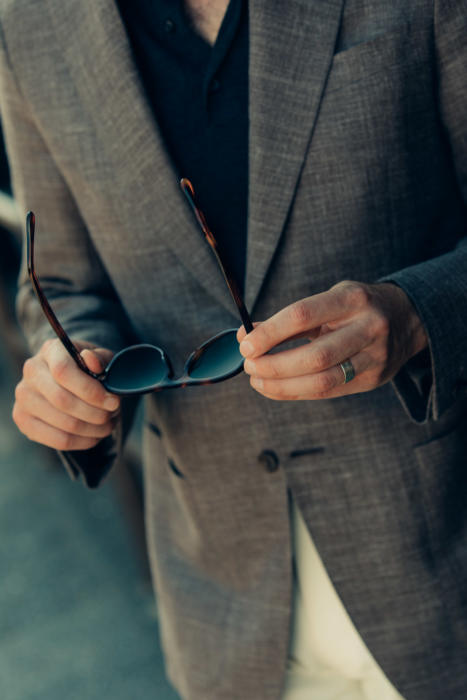
Thank you to the whole Meyrowitz team for their hospitality. Remember there is a PS category page with all historical writing about eyewear.
